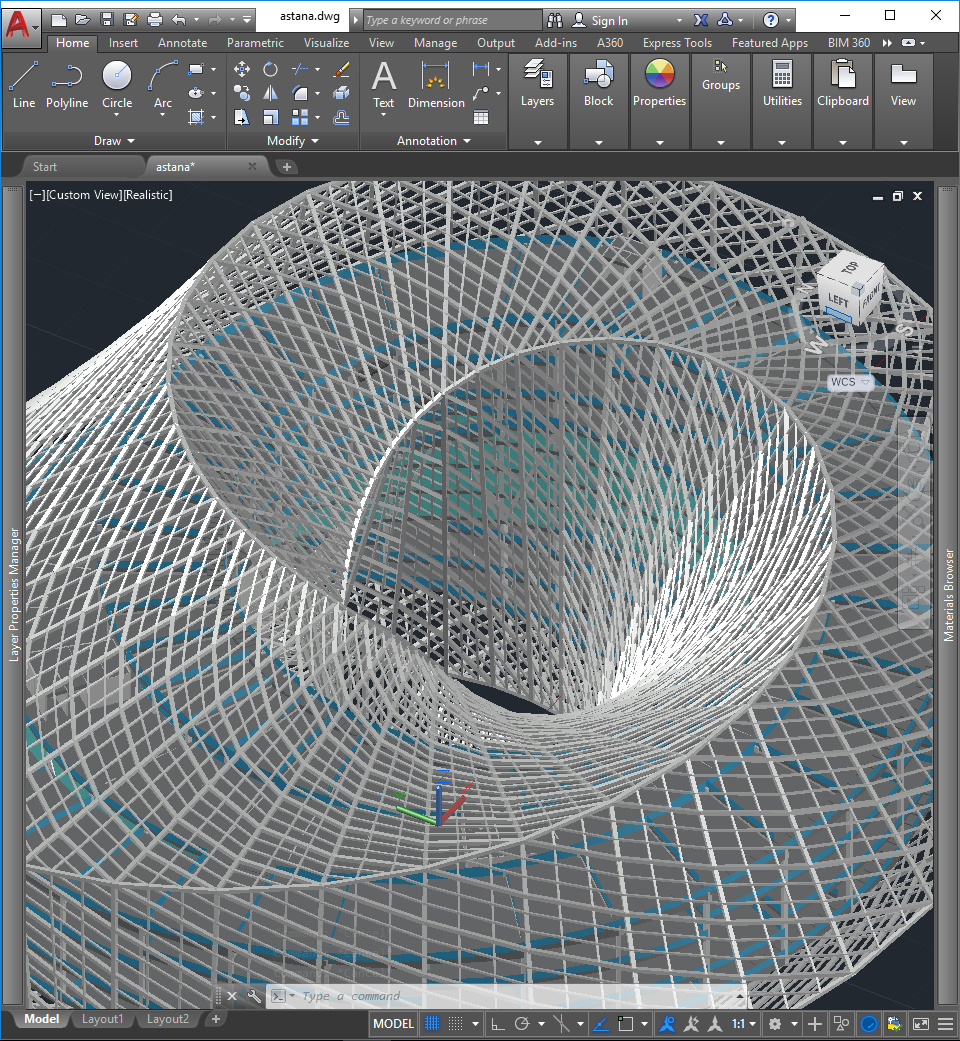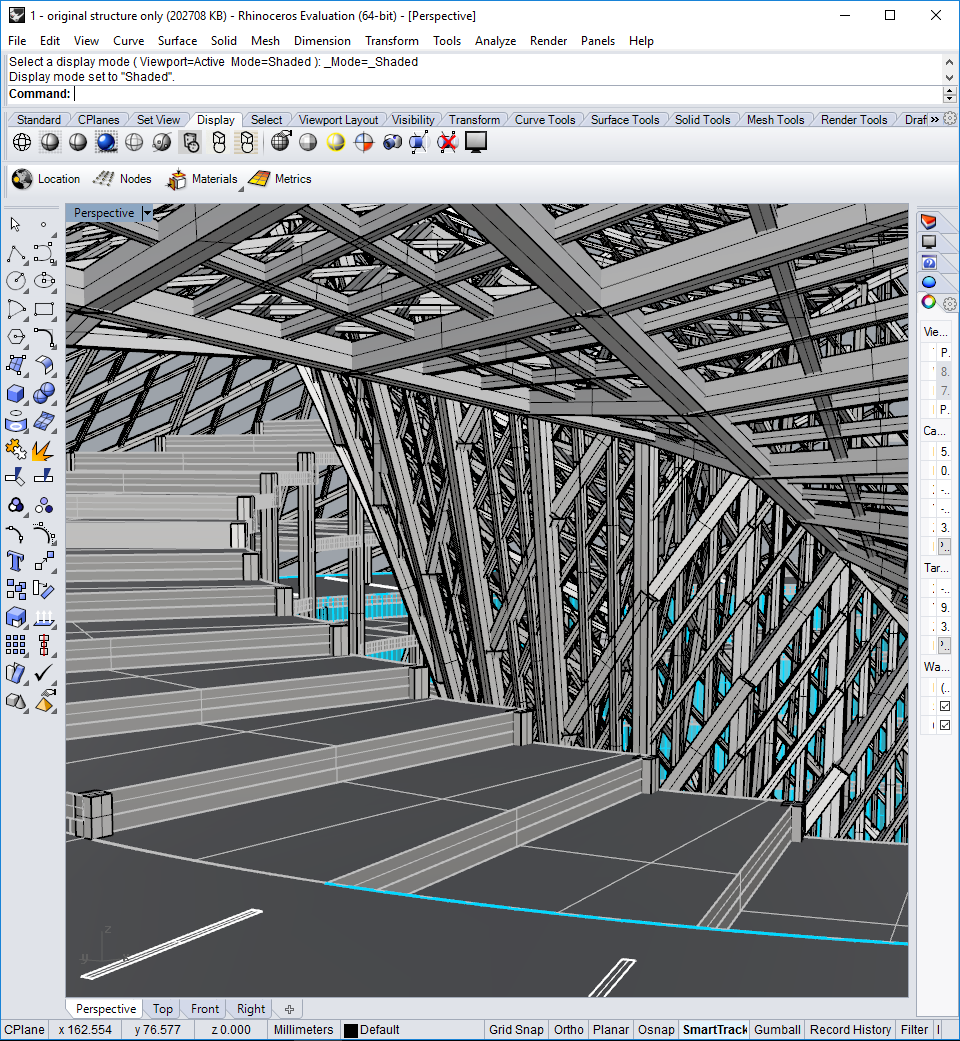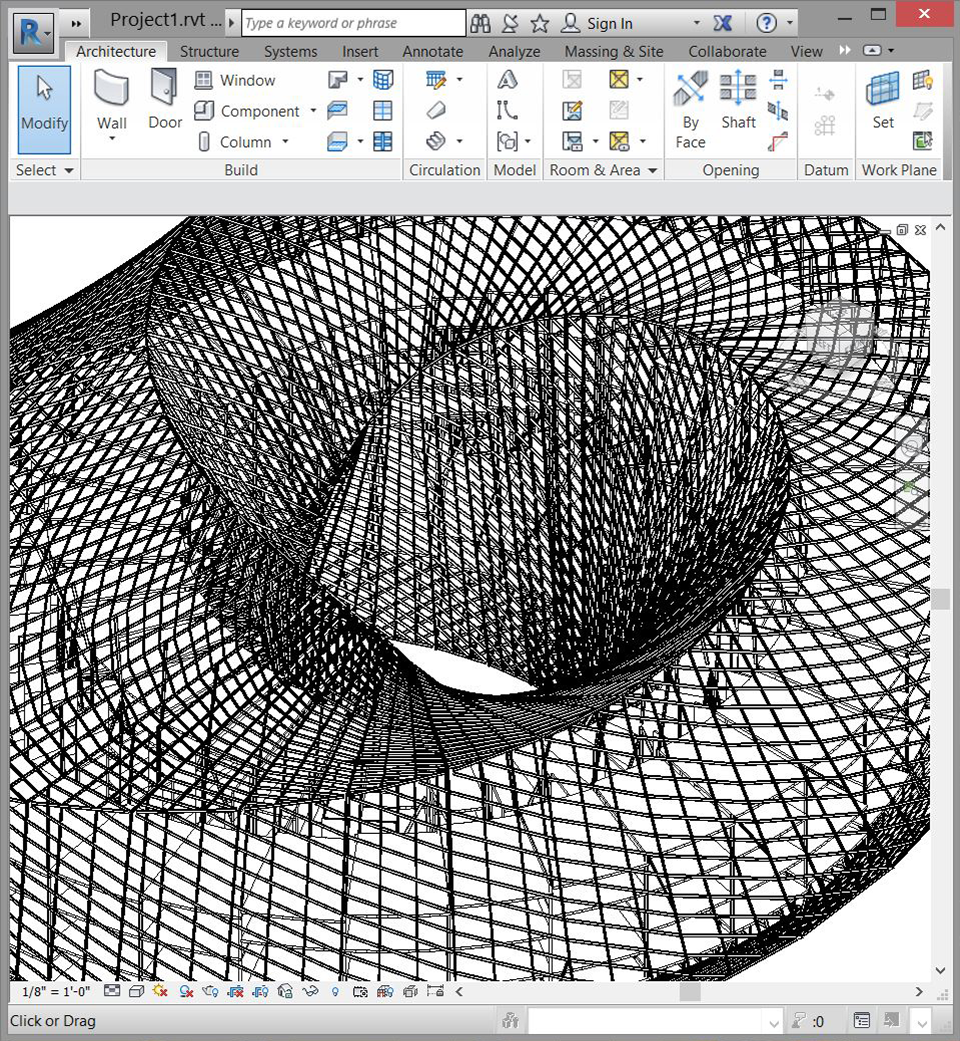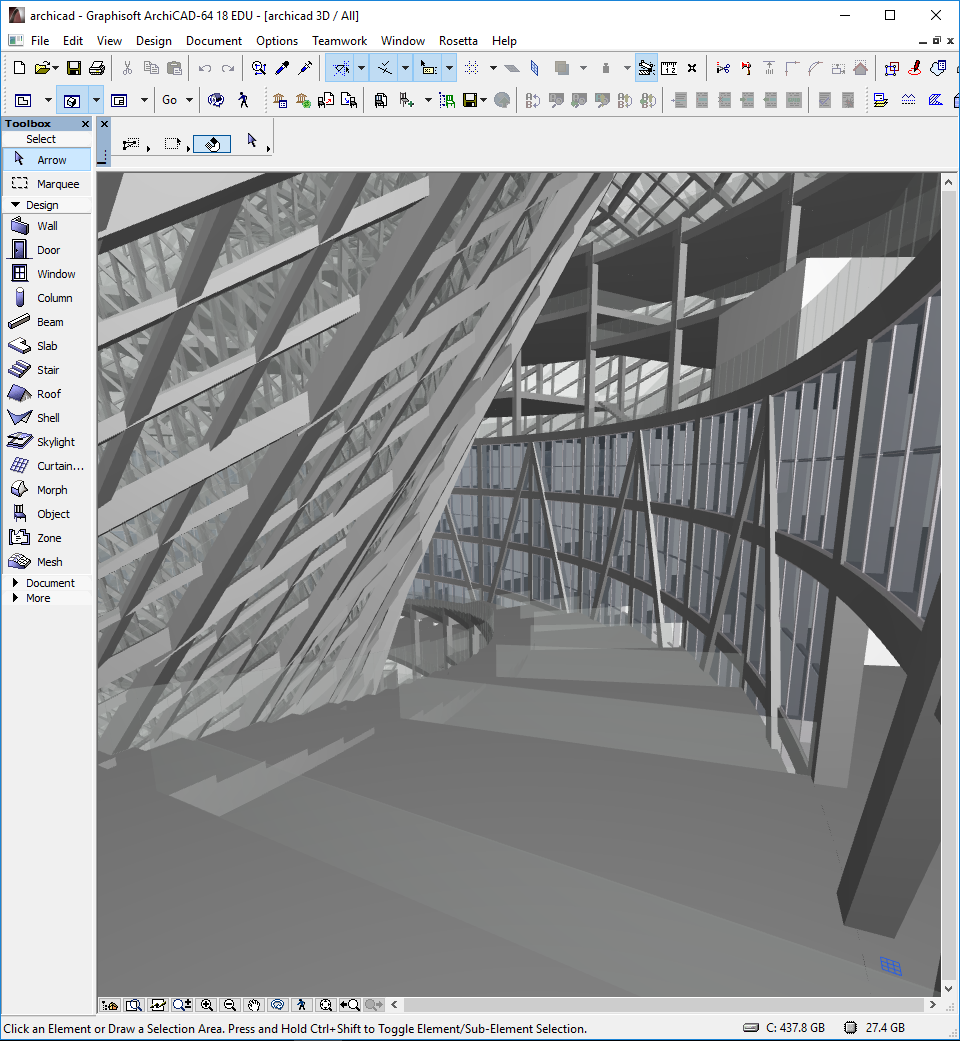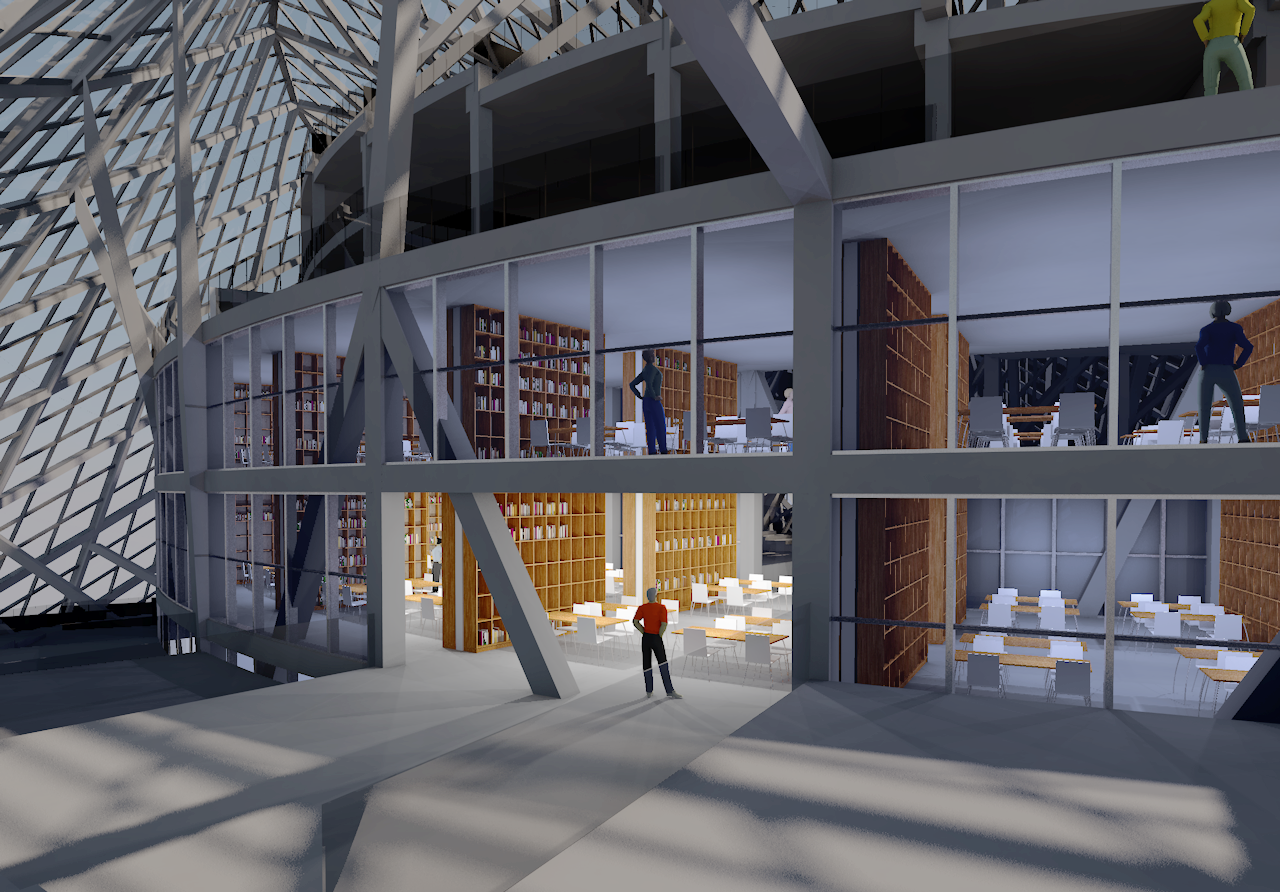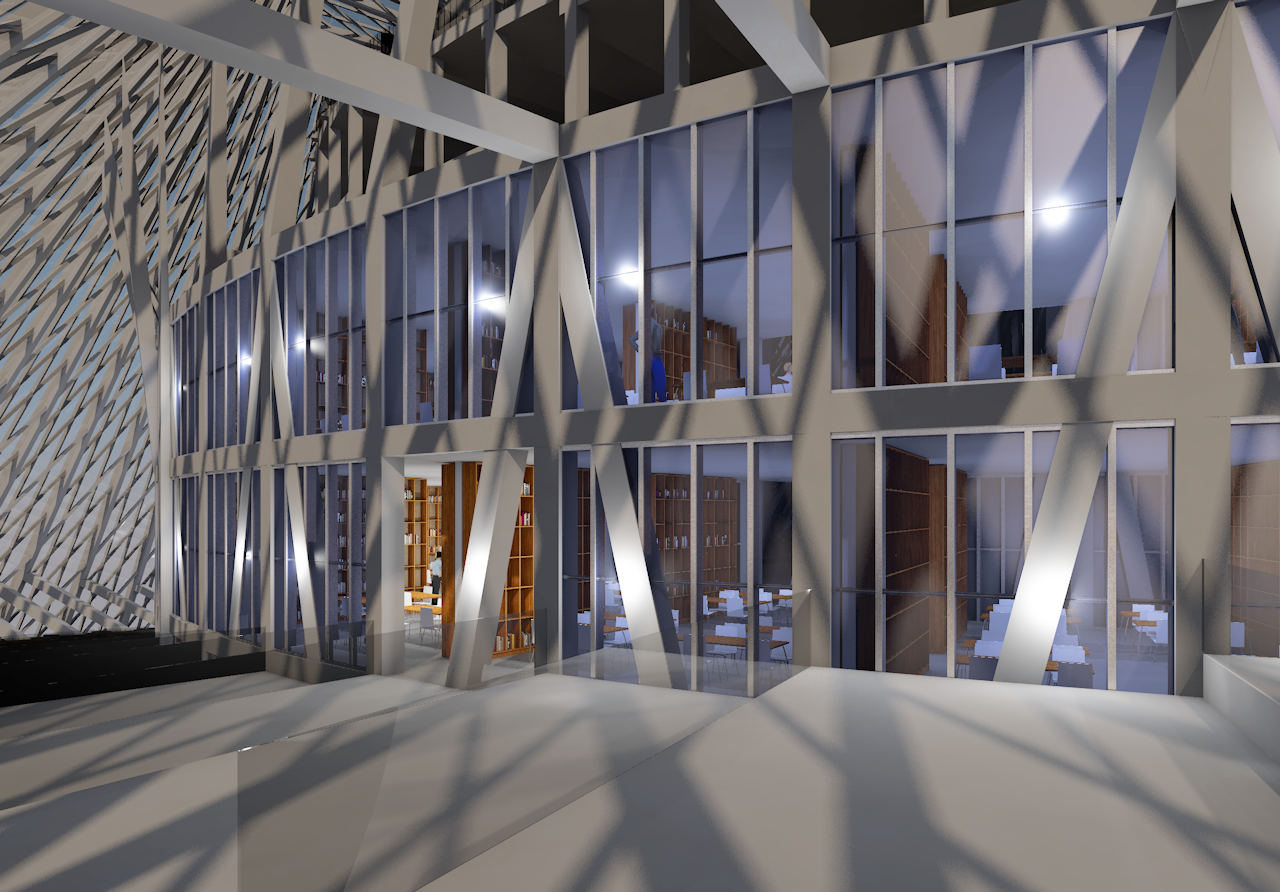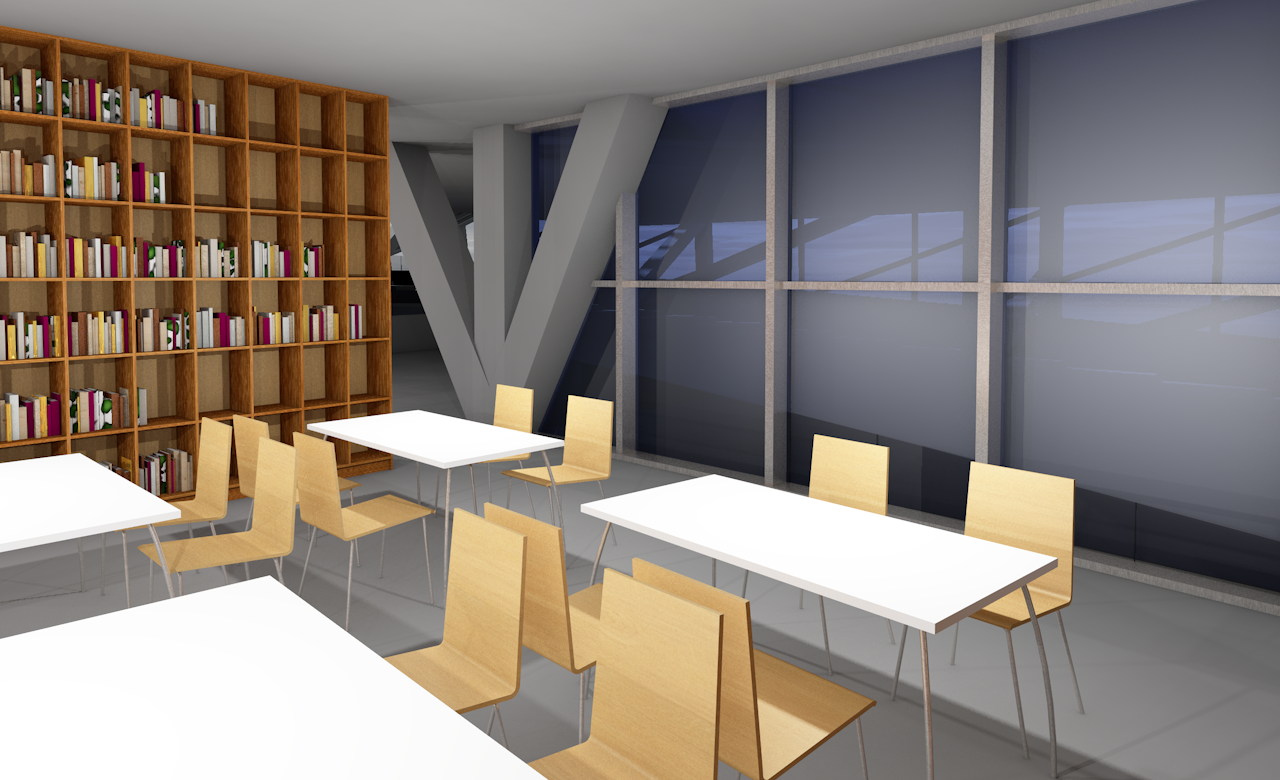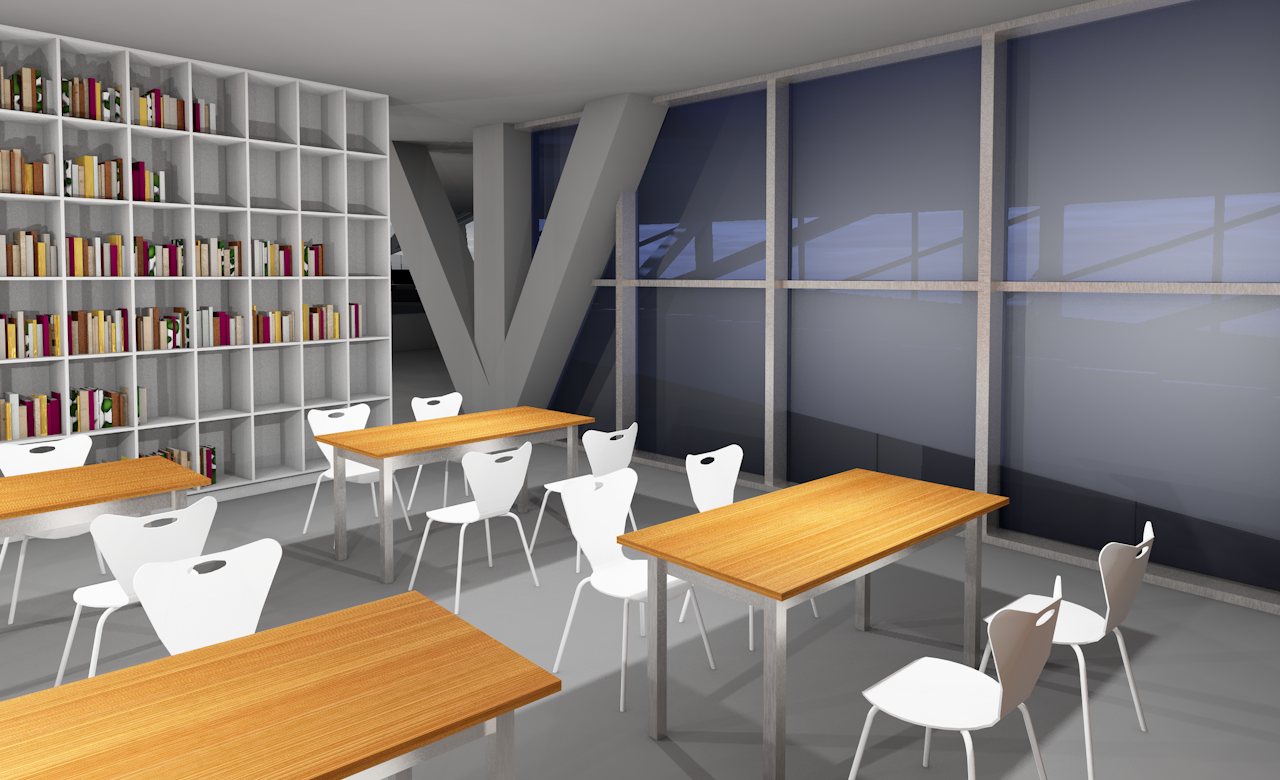Astana National Library
Original project: BIG architects
Programming Language: Racket
Algorithmic Design Tool: Rosetta
In the context of Integrated Algorithmic Design (IAD) methodology - a methodology based on the development of a single script that, not only describes the intended model, but also the required analysis, allowing users to take advantage of CAD, BIM and analysis tools, with little effort when it comes to the transition between them – the Astana Nation Library project was modeled.
Modeling a composition such as the chosen case study by hand in either a CAD or a BIM tool would take considerable amounts of time and effort. Furthermore, manually handling changes that might need to be introduced in further stages of modeling is a largely time-consuming task that can be drastically reduced when using AD.
The methodology presented is outlined in three main stages: (1) CAD modeling for an initial exploratory form and concept stage; (2) BIM modeling for a more detailed stage in the process; (3) analysis integration - may occur during the 1st and/or 2nd phase. The modelling tool used was Rosetta, a programming environment that supports portable AD, and thus allows the architect to experiment an integrated algorithmic design process. Rosetta is capable of generating geometry in various CAD and BIM applications, such as SketchUp, Rhinoceros, AutoCAD, Revit and ArchiCAD, as well as in OpenGL for faster visualization. More recently it has also been extended to include Radiance, an analysis tool.
CAD tools are more advantageous in an initial stage of the model as they are more flexible and present a better performance when compared to BIM tools, so we began modeling the design within the CAD paradigm. After acquiring the overall shape with the essential structural elements, we completed the full transitioning to BIM, as the remaining elements left to model would greatly benefit from pre-existent objects available in BIM libraries.
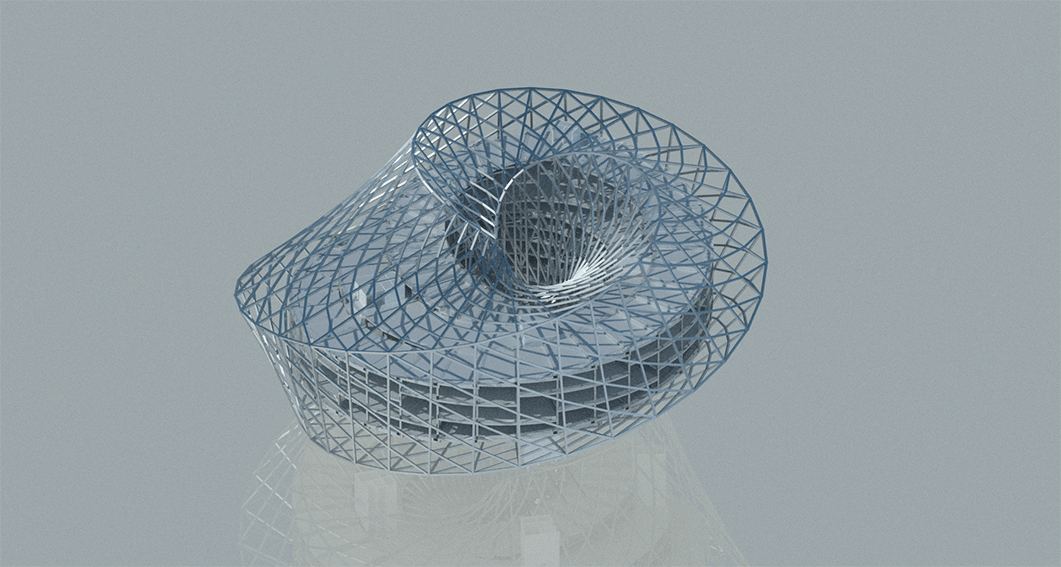
Regarding the analysis integration, the programming tool connects to the analysis software and exchanges the necessary data to the algorithmic model. The algorithmic integration of analysis tools offers the architects the possibility to analyze the building’s shape at any given time of the design process with no effort at all, allowing for a more informed development of the form. In Astana’s case, we set Rosetta to perform a daylight analysis on the building’s façade, using the Radiance back-end. The resulting radiation values are then used to create an ecological façade pattern, grounded on solar impact.
Finally, the detail modeled in BIM can not only satisfy construction purposes, but may also include additional decorative elements in order to sell the project’s image to a possible client. Rendering, a task that is normally the last to be executed in a manual approach and, given the time it consumes, one the architect is usually unwilling to repeat many times, is a much faster endeavor when using an algorithmic approach. With IAD, this should be an exercise that, after the initial burden, can be repeated countless times without effort, for as many variations as the model may have. We filled the central volume’s space of our case study with objects that we felt would naturally decorate a library space. We used several of ArchiCAD’s pre-modeled objects and, since the model is parametric, tested some variations.
Publications with this case study
Algorithmic-Based Analysis: Design and Analysis in a Multi Back-end Generative ToolTranslating Algorithmic Design from CAD to BIM
Integrated Algorithmic Design: A single-script approach for multiple design tasks
Integrated Algorithmic Design
Design Algorítmico Integrado (in portuguese)
Algorithmic Architectural Visualization

